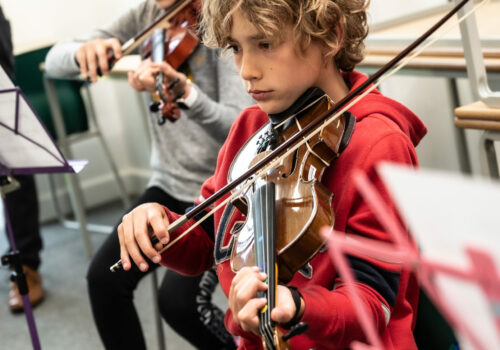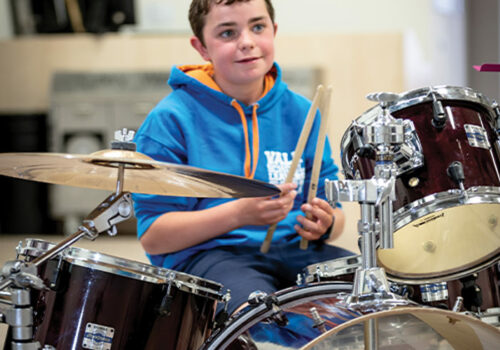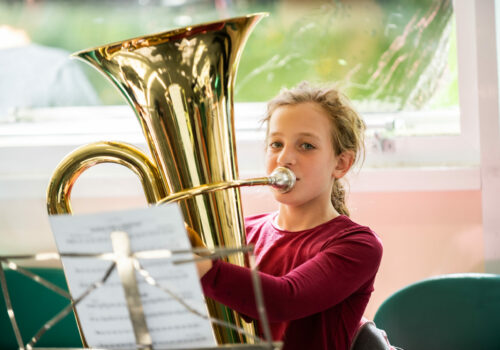Begin your musical journey today
Have you ever heard an amazing musician in action and wished you could do that? Everyone starts somewhere…
The standard course of school-based instrumental tuition is 33 lessons across the year
The standard course of Music Centre instrumental tuition is 30 lessons across the year
Help with costs
The West Sussex Music Bursary Fund can offer financial assistance with group lessons, instrument hire and music centre membership for students on benefit-related free school meals, for children in care, for young carers and refugees.
What instruments can I learn?
Between us, we teach a huge range of orchestral instruments, including brass, woodwind, string and percussion instruments, contemporary instruments, including guitar, keyboard and drum kit, as well as singing.
Whether you want to take up piano, a traditional orchestral instrument like the violin, cello or flute, find your jazz groove on the trumpet or saxophone, or rock on the guitar or drums, there is a teacher for you.
We also offer lessons in composition, theory, and song writing.
- Double bass
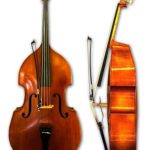
The double bass, also known simply as the bass, is the largest and lowest-pitched bowed (or plucked) string instrument in the modern symphony orchestra.
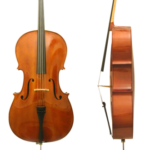 Cello
Cello
The cello or violoncello is a bowed string instrument of the violin family. It often plays the bass part, where it may be reinforced an octave lower by the double basses.
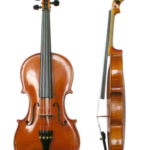 Violin
Violin
The violin typically has four strings (some can have five), and is most commonly played by drawing a bow across its strings. It can also be played by plucking the strings with the fingers (pizzicato) and, in specialized cases, by striking the strings with the wooden side of the bow (col legno).
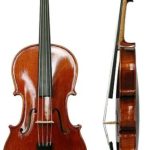 Viola
Viola
The viola is a string instrument that is bowed, plucked, or played with varying techniques. Slightly larger than a violin, it has a lower and deeper sound.
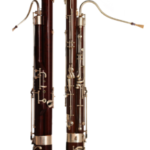 Bassoon
Bassoon
The bassoon is a woodwind instrument in the double reed family, which plays in the tenor and bass ranges. It is composed of six pieces and is usually made of wood. It is known for its distinctive tone colour, wide range, versatility, and virtuosity.
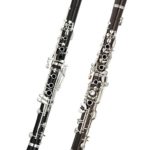 Clarinet
Clarinet
The clarinet is a type of single-reed woodwind instrument. clarinets are made in several different sizes, each having its own range of pitches. All have a nearly-cylindrical bore and a flared bell and utilize a mouthpiece with a single reed. A person who plays the clarinet is called a clarinettist
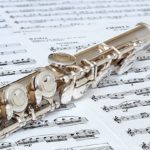 Flute
Flute
Unlike woodwind instruments with reeds, a flute is a reedless wind instrument that produces its sound from the flow of air across an opening.
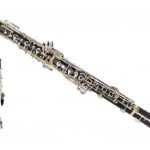 Oboe
Oboe
The oboe is a type of double reed woodwind instrument. Today, the oboe is commonly used as an orchestral or solo instrument in symphony orchestras, concert bands and chamber ensembles
 Recorder
Recorder
Family of woodwind musical instruments in the group known as internal duct flutes: flutes with a whistle mouthpiece, also known as flutes. A recorder can be distinguished from other duct flutes by the presence of a thumb-hole for the upper hand and seven finger-holes
 Saxophone
Saxophone
A type of single-reed woodwind instrument with a conical body, usually made of brass. As with all single-reed instruments, sound is produced when a reed on a mouthpiece vibrates to produce a sound wave inside the instrument’s body.
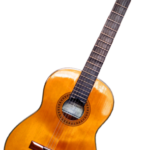 Acoustic Guitar
Acoustic Guitar
When a string is plucked its vibration is transmitted from the bridge, resonating throughout the top of the guitar. It is also transmitted to the side and back of the instrument, resonating through the air in the body, and producing sound from the sound hole.
 Electric Guitar
Electric Guitar
An electric guitar is a guitar that requires external amplification in order to be heard at typical performance volumes. It uses one or more pickups to convert the vibration of its strings into electrical signals, which ultimately are reproduced as sound by loudspeakers.
-
 Bass Guitar
Bass Guitar
The bass guitar, electric bass or simply bass, is the lowest-pitched member of the string family. It is a plucked string instrument similar in appearance and construction to an electric or an acoustic guitar, but with a longer neck and scale length, and typically four to six strings or courses.
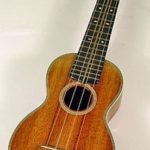 Ukulele
Ukulele
The ukulele also called Uke, generally employs four nylon strings. The tone and volume of the instrument vary with size and construction. Ukuleles commonly come in four sizes: soprano, concert, tenor, and baritone.
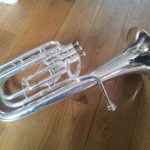 Baritone
Baritone
The baritone horn or sometimes just called baritone, is a low-pitched brass instrument in the saxhorn family. It is a piston-valve brass instrument with a bore that is mostly conical but it has a narrower bore compared to the similarly pitched euphonium.
 Cornet
Cornet
The cornet is a brass instrument similar to the trumpet but distinguished from it by its conical bore, more compact shape, and mellower tone quality.
 Euphonium
Euphonium
The euphonium is in the family of brass instruments, more particularly low-brass instruments with many relatives. It is extremely similar to a baritone horn.
 French Horn
French Horn
The French horn (since the 1930s known simply as the horn in professional music circles) is a brass instrument made of tubing wrapped into a coil with a flared bell. A musician who plays a horn is known as a horn player or hornist.
 Trombone
Trombone
The trombone is a musical instrument in the brass family. As with all brass instruments, sound is produced when the player’s vibrating lips (embouchure) cause the air column inside the instrument to vibrate. Most brass instruments use valves to alter the pitch, but trombones have a telescoping slide mechanism instead.
 Tuba
Tuba
The tuba is the lowest-pitched musical instrument in the brass family. As with all brass instruments, the sound is produced by lip vibration – a buzz – into a mouthpiece. A person who plays the tuba is called a tubaist, a tubist, or simply a tuba player.
 Trumpet
Trumpet
The trumpet is a brass instrument commonly used in art music styles, for instance in orchestras, concert bands, and jazz ensembles, as well as in popular music. They are played by blowing air through nearly-closed lips (called the player’s embouchure), producing a “buzzing” sound that starts a standing wave vibration in the air column inside the instrument.
 Piano
Piano
The piano is a stringed keyboard instrument in which the strings are struck by wooden hammers that are coated with a softer material (modern hammers are covered with dense wool felt; some early pianos used leather). Since the most commonly encountered keyboard instrument is the piano, the keyboard layout is often referred to as the piano keyboard.
 Keyboard
Keyboard
An electronic musical instrument, an electronic derivative of keyboard instruments. Electronic keyboards include synthesizers, digital pianos, stage pianos, electronic organs and digital audio workstations. In technical terms, an electronic keyboard is a synthesizer with a low-wattage power amplifier and small loudspeakers.
 Orchestral percussion
Orchestral percussion
A percussion instrument is a musical instrument that is sounded by being struck or scraped by a beater including attached or enclosed beaters or rattles struck, scraped or rubbed by hand or struck against another similar instrument. The percussion section of an orchestra most commonly contains instruments such as the timpani, snare drum, bass drum, cymbals, triangle and tambourine.
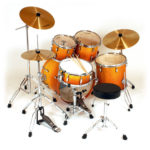 Drum kit
Drum kit
Drum kits are set up on stands to be played by a single player with drumsticks held in both hands; the feet operate pedals that control the hi-hat cymbal and the beater for the bass drum. Sometimes, there may be two bass drum pedals to assist the player in playing faster rhythms.
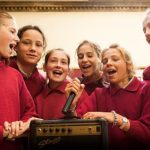 Singing
Singing
Singing is the act of creating musical sounds with the voice. A person who sings is called a singer or vocalist. Singers perform music that can be sung with or without accompaniment by musical instruments. Singing is often done in an ensemble of musicians, such as a choir.
FAQs
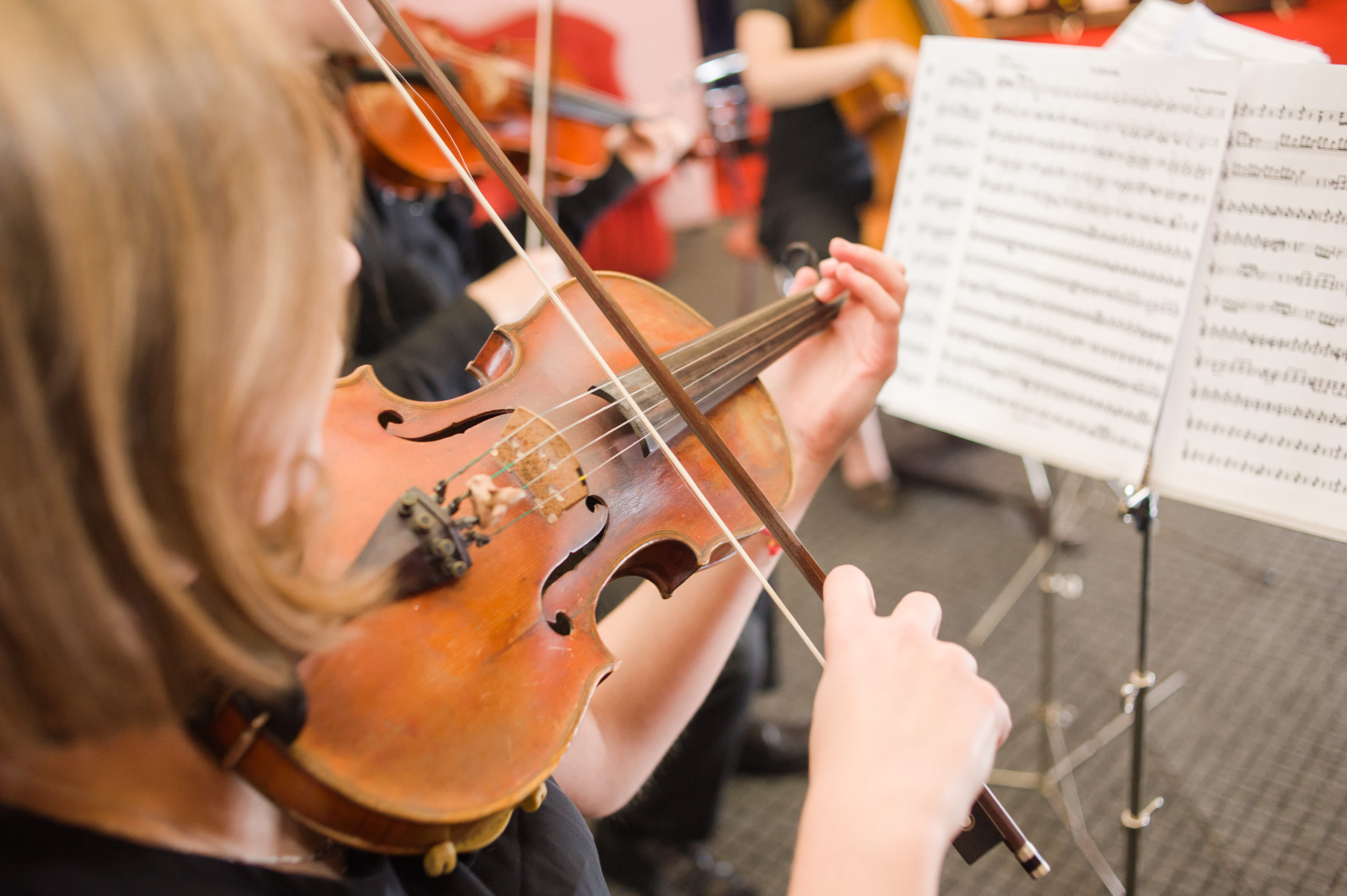
We have a network of inspiring providers who will help your child fulfil their musical ambitions. Some teachers work directly for West Sussex Music, others are quality-assured freelance Associate Tutors.
All our music teachers and associates have enhanced criminal record checks (DBS), public liability insurance and annual safeguarding training. They also have opportunities for ongoing professional development training and shared teaching resources.
Most are music college or university graduates; some are qualified classroom teachers, and many have an active professional performing career as well.
Group Lessons: small groups of three or more pupils are taught together for 30 minutes. This is a great way to start off.
Individual Lessons: are usually of 20 minutes or 30 minutes duration upwards.
The choice is yours. Most beginners start in group lessons (except piano) and many children enjoy the fun of group lessons and learning with their friends. For others, the focus and attention that an individual lesson provides is more suitable.
If your first choice instrument is not available, we may be able to offer lessons on an alternative.
If enough pupils are interested in learning something not currently on offer, then it might be possible to introduce a new instrument at your school.
It is not possible to refund or make up lessons missed by pupils.
If a teacher misses a lesson then it will be made up later in the term or later in the year. If the full course of lessons has not been offered, we will offer credits (please see our regulations and conditions). It is not possible to refund or make up lessons missed by pupils.

